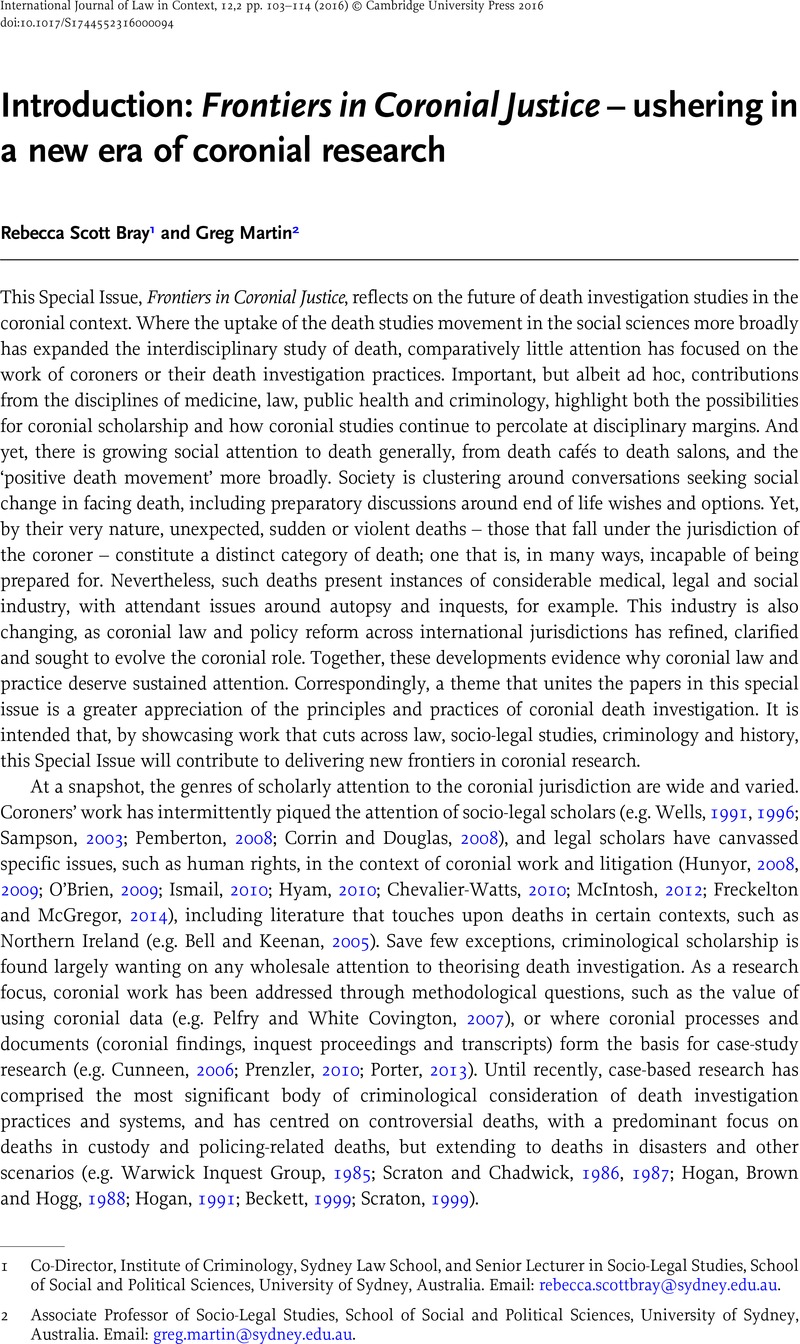Crossref Citations
This article has been cited by the following publications. This list is generated based on data provided by Crossref.
Ngo, Mark
Matthews, Lynda R.
Quinlan, Michael
and
Bohle, Philip
2021.
Bereaved Family Members’ Views of the Value of Coronial Inquests Into Fatal Work Incidents.
OMEGA - Journal of Death and Dying,
Vol. 82,
Issue. 3,
p.
446.





